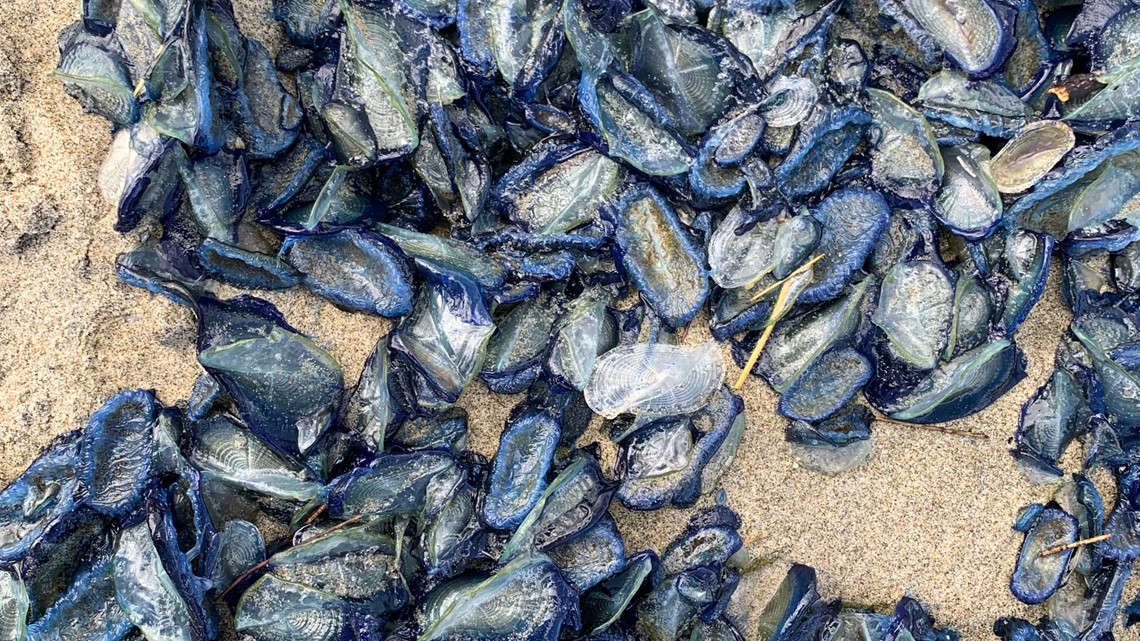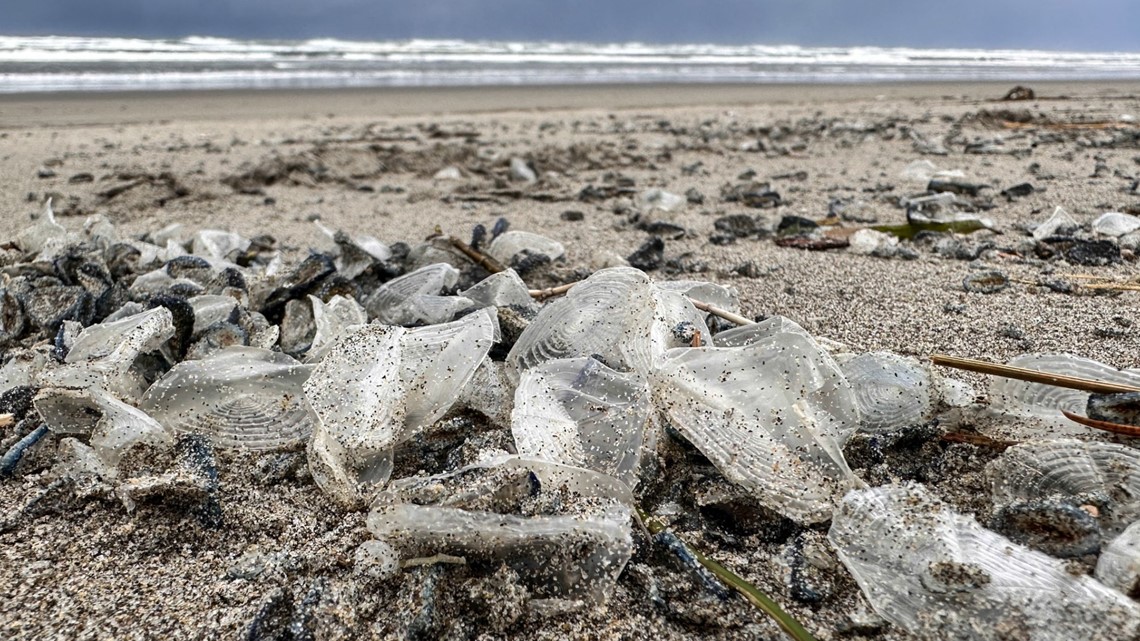SEASIDE, Ore. — Visitors at the Oregon Coast in recent weeks have spotted something unusual along some stretches of the beach: large clusters of small, blue-tinted creatures that look sort of like jellyfish, piled up along the high-water line.
Viewer Marcy McPherson sent KGW a couple photos of the phenomenon, taken Tuesday along a stretch of beach to the south of Pacific City. Her photos show what appear to be thousands of the creatures lined up along the beach, stretching on for hundreds of feet. She speculated that the eye-catching visitors might be flocks of a certain sea creature called a blue velella.


The Seaside Aquarium posted about the phenomenon on Facebook earlier this month, and it turns out the creatures are indeed velellas — officially called Velella velella (genus Velella, species velella). They're also known as purple sails or by-the-wind sailors.
They're sometimes described as a kind of jellyfish, although despite the similar appearance, the two animals are more like cousins — according to the National Park Service, velellas and jellyfish are related through a broad taxonomic category that also includes sea anemones and corals.
Velellas have two main body parts: an iridescent blue or purple disc and a transparent "sail" disc extending up from it. They live on the surface of the ocean and use the sail disc to catch the wind and travel around, according to the aquarium's post. Wind from the west can cause them to wash up on Oregon's beaches, where they dry out or get eaten by other wildlife.


They most often wash up in Oregon in the spring and summer, according to Seaside Aquarium director Keith Chandler, although they occasionally also pop up at other times of year. Their arrival is highly weather-dependent, and therefore not as predictable or regular as other annual coast events like whale migrations.
Are velellas dangerous?
Not really.
They're sometimes mistaken for the venomous and highly painful Portuguese man o' war due to their blue coloring, according to Oregon State University, but the man o' war lives in warmer climates. Most people won't be bothered by touching a velella, although OSU's webpage recommends that people not touch their eyes or mouth afterward.
OSU also recommends not walking barefoot through the velella piles, and Chandler said it's always a good idea to keep pets and small children away from any sea creatures that wash up on the beach.
The large piles of velella can start to smell bad as they decay, Chandler added, but they tend to dry out and become buried relatively quickly.

